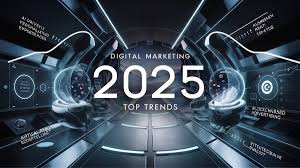
Creating a strong team and maintaining efficient collaboration and communication can be a complex task. It is particularly difficult among professionals with different skill sets or outlooks. From communication gaps to goal confusion, various challenges can disturb teams and keep even talented professionals from reaching their full potential.
However, the project managers can address these issues with strategic team development. This demands a nuanced yet passion-driven leadership. Here, we have mentioned some of the best ways to create effective and high-performing teams for your projects.
Set Clear Team Expectations and Goals
“In the recent dynamic work environment, direction and clarity are not only beneficial but also essential. Clear, achievable, and measurable goals navigatr success and guide team efforts. Moreover, these goals also maintain focus regardless of uncertainty and changes. When project managers set goals, it helps every team member to understand not only the destination but also know the roadmap to reach there.
Effective communication of the goals is critical, specifically in times of change. It includes more than just claiming objectives. It demands that every team member be sure that the goals are relevant. Plus, they align their individual efforts towards the combined mission. Through this process, project managers can build a sense of accountability and ownership. These two qualities are significant to navigating challenges and shifts as a unified entity.” – Te Wu, CEO of PMO Advisory
Establish Open Communication
Creating honest, respectful, and honest communication is fundamental to every high-performing team. It is the glue that binds all the team members together and allows them to voice concerns, share ideas, and solve problems. Build a culture where this level of communication flourishes. It requires leaders to establish an environment and set an example where feedback is not only entertained but also considered.
Encourage this open dialogue using different strategies. These may include maintaining an open-door policy and regular team meetings. With the help of these meetings, you can achieve a flexible yet structured platform for team members. In these forums, the staff can express their ideas and thoughts, provide feedback, and ask questions. An open-door policy also shows that the leader is accessible and wants to listen at any time.
Promote Diversity and Inclusion
In the transforming world of advanced workplaces, diversity, equity, and inclusion are not only buzzwords. They are also essential components of team building. A diverse team that is rich in different backgrounds, perspectives, and skills is uniquely equipped. It helps in the effective addressing of change and drives innovation. Build an inclusive environment where each team member is regarded as a potential change agent.
Moreover, they should also feel empowered to participate. With the help of diversity, you can drive innovation in ways that cannot be overstated. A diverse team brings a huge amount of ideas and experiences. It builds an environment where unconventional thinking is normal and creative solutions entertain. This is specifically valuable in a workspace where opportunities and challenges are continuously evolving. Hence, it requires adaptive strategies and fresh approaches.
Implement Efficient Leadership Styles
Effective leadership does not have a single style that fits all. It is a dynamic combination between the organization’s goals, the leader’s capabilities, and the distinct structure of the team. Understand the different leadership styles and their potential influence on team performance. It will help to build an environment of productivity, accountability, and collaboration.
A key factor to efficient leadership is the potential to transform one’s style to the changing demands of the team and the objectives. Flexibility in leadership enables the navigation of different challenges and situations. It will ensure that the strategy aligns with both the extensive organizational vision and the immediate context.
Provide Regular Feedback and Recognition
The whole cycle of feedback and recognition is fundamental to team performance and development. Micromanaging can suppress initiative and creativity. At the same time, appropriate recognition and constructive feedback fuel team and personal growth. Deliver regular and constructive feedback to inform team members of their progress. Moreover, it also helps to engage them in a collective journey of success and improvement.
Constructive feedback is more than just periodic performance reviews. Ensure to make this a constant dialogue between team members and leaders. This dialogue is crucial to identify areas for personal and team improvement. Hence, it set the stage for personal development and improves team cohesion. The goal is to create an environment where feedback is considered a tool for growth instead of criticism.
Invest in Professional Development
“The workplace is rapidly evolving and there is a need for continuous skill enhancement and learning. It is not only an investment in team members but the future of teams. Prioritize professional development in teams and ensure that the members are equipped to encounter new challenges. Moreover, it will help every team member to seize opportunities with confidence.
With continuous learning, leaders can create an environment where team members are continuously evolving. Hence, they are pushing the limits of their capabilities. It will not just improve their current performance but also prepare them for future designations within the organization. The advantage of professional development is more than an individual achievement, it contributes to a culture of innovation, adaptability, and excellence.” – John Smith, Founder at Sparkaven
Monitor and Adjust Strategies As Needed
The ability to adjust and monitor strategies in response to evolving situations is crucial in organizational development. While the beginning strategies may offer a strong starting point, the dynamic nature of market conditions, team performance, and organizational goals necessitates continuous flexibility and evaluation.
Remember that adaptability is critical in today’s ever-evolving environment. Leaders should remain responsive and flexible. It is not only for the internal team feedback but also for the market changes and trends. Through this agility, the teams can stay aligned with the organizational goals. At the same time, they can also address different challenges and grab any opportunity coming their way.
Conclusion
If you follow the right steps and strategies, you are already well on your way. Build high-performing teams and make sure to maintain that performance. Remember when teams collaborate and work together there is almost nothing they cannot accomplish. Always look at the bigger picture and increase your chances to develop and sustain high-performing work teams.


